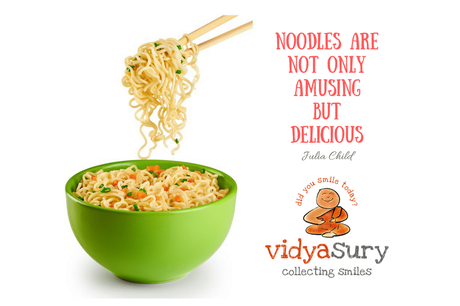
I first met MAGGI at the ripe old age of 19-they entered India in 1982. Of course my folks wouldn't dream of buying it, but luckily, I was in college and remember eating from my friend's cold lunch box. Sure I knew about noodles (yes, I had visited a Chinese restaurant once, close to our college) but the concept of instant noodles was still a stranger. It didn't take very long to bring her home, because our local grocery store had some giveaways and in she came, one bright day. We also got some of the cheerful yellow and red stickers and my uncle playfully stuck one of the "2 minute noodles" stickers on our bathroom door. He had a quirky sense of humor.
Transitioning to eating MAGGI regularly was easy enough, since we already had the noodle-like "sevai" we made from scratch at home. And of course we were fascinated by the taste-maker in the pack. When we added vegetables to it, it became a complete meal for most. Soon the word MAGGI replaced the word noodles and literally captured every heart, age no bar.
I am charmed to think I've known and enjoyed MAGGI for 35 years. My son enjoys it too and now, since he's studying on campus, it is the go-to meal for late-night study and for days when their local canteen is closed, because all it takes is hot water and two minutes.
I remember, when we had a cooking competition in our apartment complex years ago, the 4-8 years age group's topic was noodles with tomatoes and my son won first prize. That he enjoys eating uncooked noodles is irrelevant to this post, so let's move on.
I recently participated in a couple of social media campaigns by Nestlé, sharing an update about their social initiatives: empowering women through training and bringing about healthy smiles (now you know why I participated!).
When I was invited to visit their global R&D Center in Manesar, I looked forward to the opportunity to get to know MAGGI better, what with Nestlé practically being a household name, and a brand whose products we've used for decades. I was also looking forward to some myth-busting about MAGGI noodles.

At the pristine facility set among nicely tended lawns, our group was welcomed with coffee and a brief introductory session on the safety regulations used at the center. Thus fortified, we donned lab coats and set off on a tour of the labs where stringent quality control measures are taken to ensure that MAGGI is safe to eat.
It was interesting to learn the following:
- How MAGGI is made-the process each cake goes through before being packaged in environmentally-friendly, recyclable packs.
- What tests are conducted to measure the protein/fat/carbohydrate/sodium content in the noodles
- How different flavors are created for their tastemaker variants
- An introduction to the sophisticated lab equipment used for various tests
- What happens in their "culinarium" and test kitchen.
- What happens in the tasting room, how they choose their audience.
We also visited the packaging lab. I was especially interested to see some of the products they had created by recycling their packaging material. There was a backpack, t-shirts and a jazzy bling-bling bag, besides colorful furniture made from recycling tetra packs.
The tour ended with a sensory experience of the oats and atta noodles followed by a visit to their "culinarium"-which was fabulous-and developmental kitchen-basically an R&D kitchen.
We already know that no food item is healthy or unhealthy in isolation. It takes a balanced diet, portion control and adequate exercise to stay healthy. When we talk about a balanced diet, it implies that the total calories consumed during the day, 50-60% should be from carbohydrates, 10-15% proteins and 20-30% from fat.
With that in mind, here are the salient points from the information shared with us by the research scientists:
- MAGGI Noodles is designed to conform to the ICMR's guidelines for a balanced diet. Their Oat noodles contain approximately 56% energy from carbs, 10% protein and 33% fat.
- For Indians, the ICMR recommendation is as follows: total fat in the diet: 20-30% of total calories and this can go up to 50g depending on level of physical activity and individual's physiology. Vis-à-vis this, a pack of MAGGI noodles contains 11-13g fat, which is in the recommended limit, about one-fifths of the total fat in the individual's diet. For perspective, consider a serving of aloo paratha, dosa, veg biryani, etc. whose fat content is generally more.
I asked about the salt content-and was informed that glutamate reduces the salt content significantly. Moreover, if you look at that pack of MAGGI on your shelf, you'll notice that each 70 g cake . Which of course brought me to the MSG dilemma.
The pack says no added MSG, but has glutamate from hydrolysed groundnut protein, onion powder and wheat flour and this produces a positive result in a test for MSG. L-Glutamate is an amino acid found abundantly in protein and present in all protein-rich foods such as cheese, milk, mushrooms, meat, fish, and many vegetables. While the natural flavor-enhancing levels of glutamate in food vary, they are especially high in foods such as tomatoes, mushrooms, soy sauce and fish sauce.
Also, iron-fortified MAGGI gives you 15% of your daily iron requirement.
So how do they make MAGGI?
I would love to visit the manufacturing plant someday, but here's how MAGGI noodles are made. Each cake goes through a 5-step cooking process before being packed. These steps are:
- Steaming-like idlis
- Baking
- Quick frying for a minute and a half to reduce the moisture and cook them for stability, and also to ensure the noodles cook in boiling water in 2 minutes.
- Drying
- Cooling

Were you wondering, with all this info, how often you can eat MAGGI noodles? Will MAGGI make you fat? Is it high in sodium? Is it healthy? Isn't it processed food?
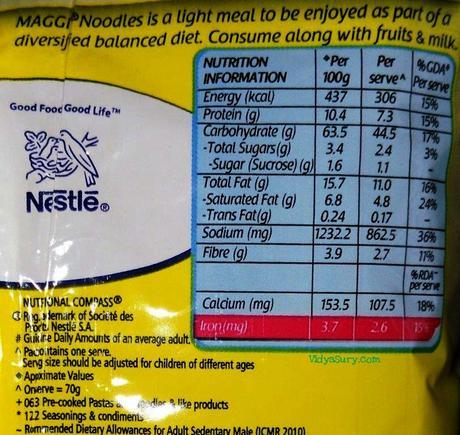
If you look at the label, you'll notice for each item listed under nutrition information, there's a value per 100 gm, per serve, and % GDA per serve (GDA=Guideline daily amount). Look at the %GDA per serve to get an idea of how much fiber/sodium/fat/carb/protein/energy in each serving, which would be 70g of MAGGI.
The fact that all foods are best consumed in moderation is not new advice. At the end of the day, a healthy diverse and balanced diet is the best way to get all the necessary nutrition: fats, carbohydrates, fiber, protein and micronutrients in the right proportions. So-MAGGI-like everything else you eat-make it part of a balanced diet. Eat all processed foods in moderation. Don't forget to get enough exercise and sleep to stay healthy. Also, there is nothing to stop you from adding your favorite veggies when you cook MAGGI to make it a filling meal. That's how we enjoy our noodles at home. With the conscious reducing of salt content in the tastemaker and the introduction of oat and atta noodles, we are not guilty about enjoying noodles once a week.
All in all, I really enjoyed my experience at the Nestlé R&D facility. It was good to see the care and stringent quality control that goes into making one of our most favorite foods.
Here are some photos from my visit:The lobby
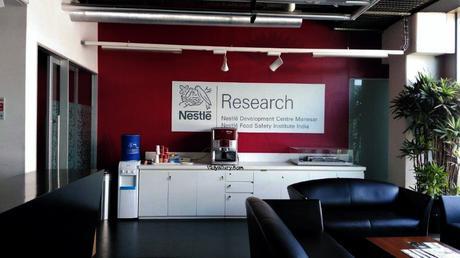 Good to know Nestlé's commitment to quality
Good to know Nestlé's commitment to quality 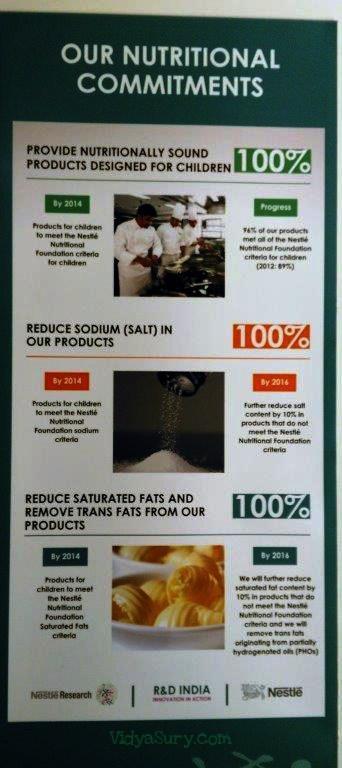
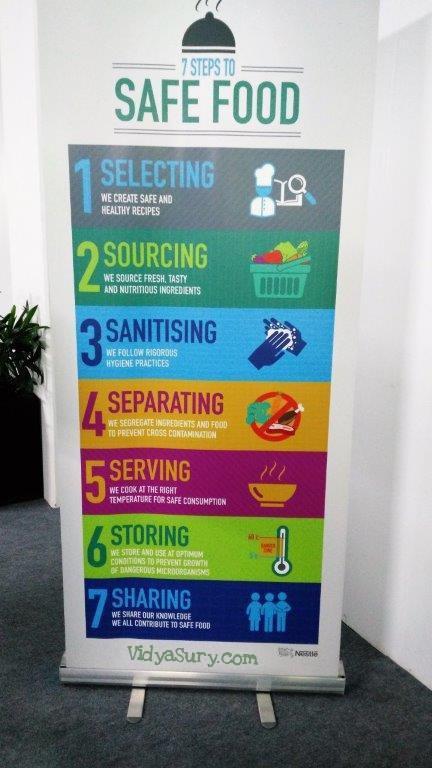
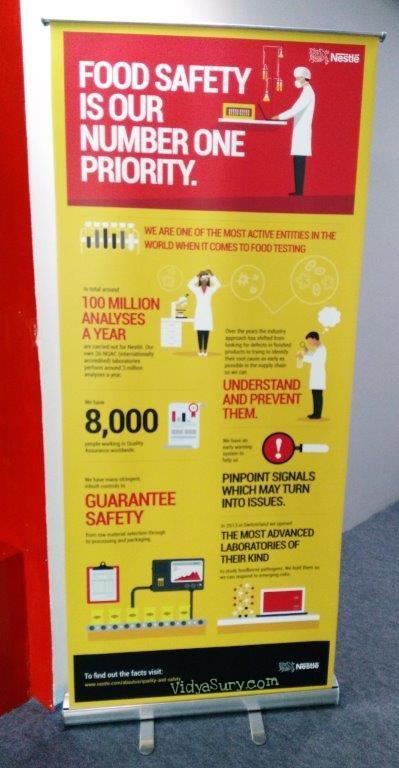
A tour through the labs
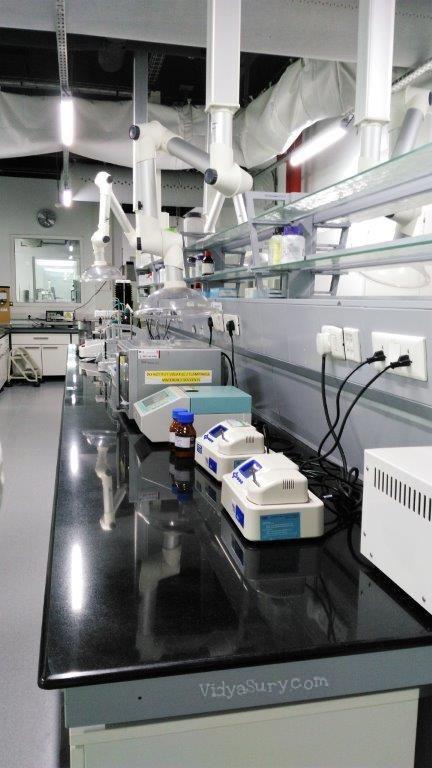
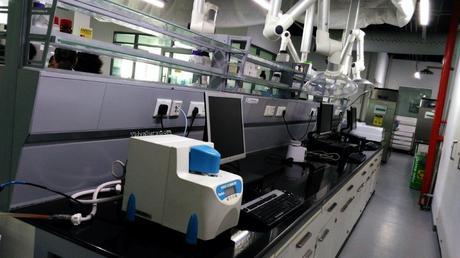
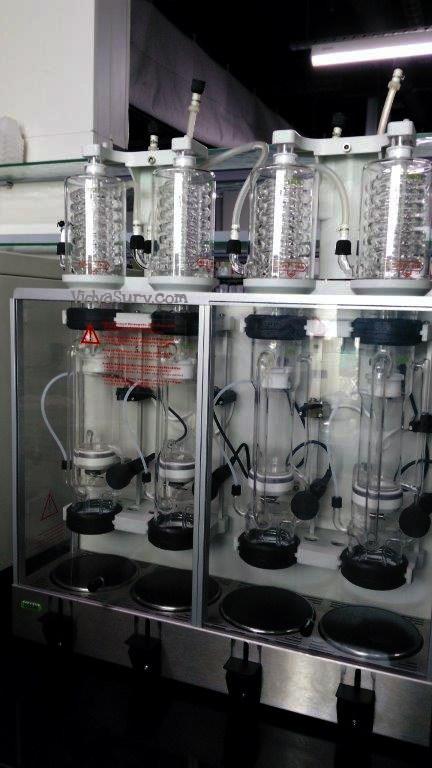
The tasting room

The gorgeous kitchen. So well-equipped and stylish.
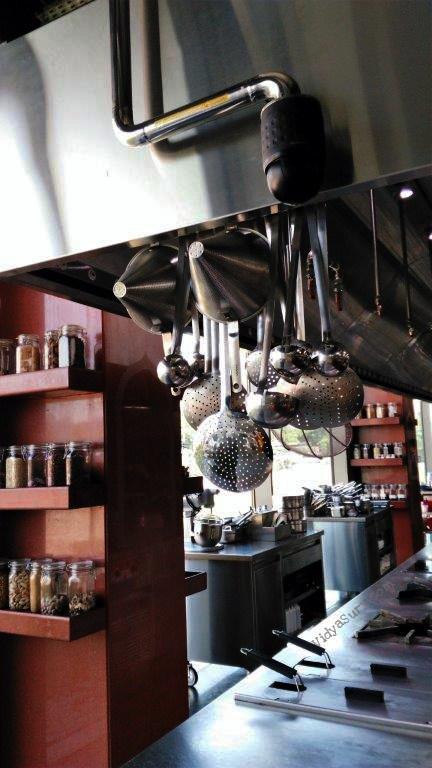
The chef at work
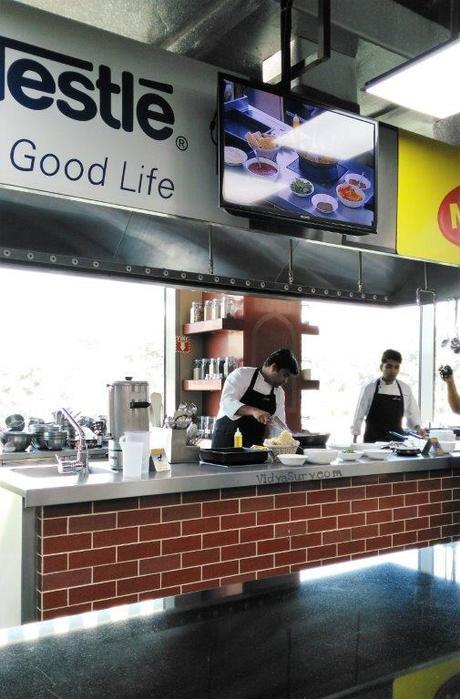
And the nice chef let me cut my "birthday cake" - MAGGI lasagna-which he made especially for us.
Wishing you had gone with me? Here's a nice three minute video that captures a short tour of the facility:
Does your family enjoy MAGGI?
Share your favorite experience with me in the comments!
Writer, editor, blogger, social media enthusiast. Love DIY, Coffee, Music, Reading, Photography, Family, Friends and Life. Mantra: Happiness is a DIY Project. In my free time I play with my dust bunnies and show my diabetes who's boss. Tweet as @vidyasury

